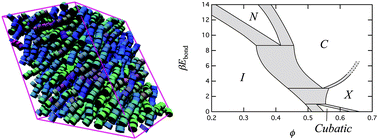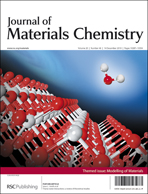Many soft-matter and biophysical systems are composed of monomers that reversibly assemble into rod-like aggregates. The aggregates can then order into liquid-crystal phases if the density is high enough, and liquid-crystal ordering promotes increased growth of aggregates. Systems that display coupled aggregation and liquid-crystal ordering include wormlike micelles, chromonic liquid crystals, DNA and RNA, and protein polymers and fibrils. Coarse-grained molecular models that capture key features of coupled aggregation and liquid-crystal ordering common to many different systems are lacking; in particular, the roles of monomer aspect ratio and aggregate flexibility in controlling the phase behavior are not well understood. Here we study a minimal system of sticky cylinders using Monte Carlo simulations and analytic theory. Cylindrical monomers interact primarily by hard-core interactions but can stack and bind end to end. We present results for several different cylinder aspect ratios and a range of end-to-end binding energies. The phase diagrams are qualitatively similar to those of chromonic liquid crystals, with an isotropic-nematic-columnar triple point. The location of the triple point is sensitive to the monomer aspect ratio. We find that the aggregate persistence length varies with temperature in a way that is controlled by the interaction potential; this suggests that the form of the interaction potential affects the phase behavior of the system. Our analytic theory shows improvement compared to previous theory in quantitatively predicting the I–N transition for relatively stiff aggregates, but requires a better treatment of aggregate flexibility.

You have access to this article
 Please wait while we load your content...
Something went wrong. Try again?
Please wait while we load your content...
Something went wrong. Try again?


 Please wait while we load your content...
Please wait while we load your content...